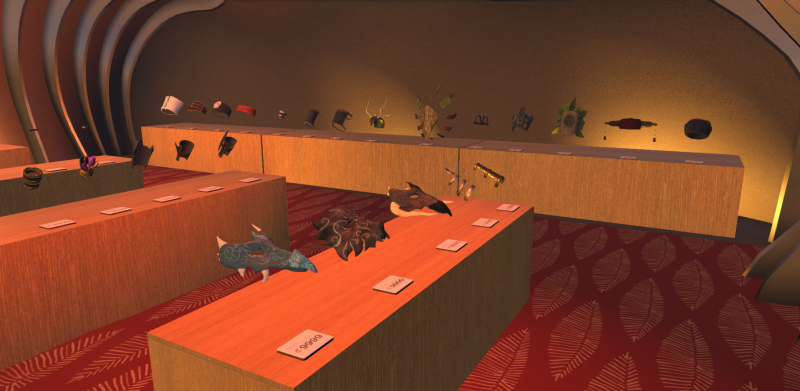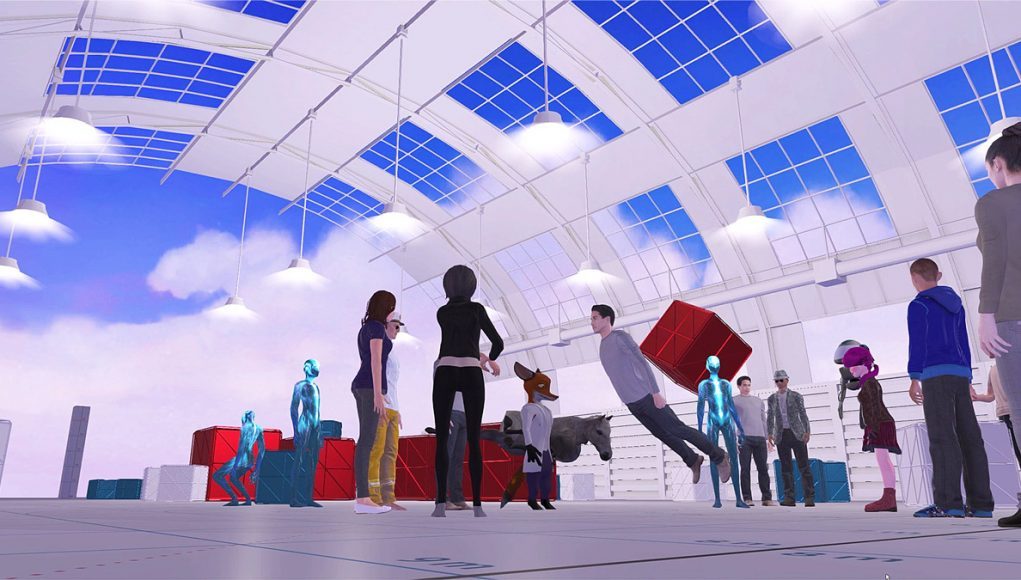High Fidelity, the social VR app founded by Second Life founder Philip Rosedale, recently launched Avatar Island – the first of many future in-world stores stocked with digital assets for its users to buy. While purchasing digital items like hats and t-shirts may not be anything out of the ordinary for fans of its spiritual predecessor Second Life, the store is showcasing High Fidelity‘s more recent development: its own cryptocurrency and a blockchain-based ledger system, both of which aim to pave the way for a functioning in-world economy.
High Fidelity‘s cryptocurrency, called High Fidelity Coin (HFC) isn’t like other coins. While it can be converted to local fiat currencies or to other cryptocurrencies at popular exchanges, it can’t be mined by users like Bitcoin or Ethereum, but instead will be managed by the company so the number of coins gradually increases as the economy grows.
Boasting stability over volatility, what makes HFC special is the way it ties the exchange of digital goods to the blockchain, or what the company calls the Digital Asset Registry (DAR). Acting as an open ledger, DAR stores information about the ownership of digital assets in virtual worlds, and is used to protect intellectual property by embedding certification related to item ownership into the blockchain itself. This certification is unalterable and can’t be deleted, and contains information on the chain of object ownership, its characteristics, and its entire history – from the very moment it was verified as a valid in-game object.

According to a blogpost authored by COO Thomas Schofield, DAR allows each item to be uniquely identified via a digital fingerprint (a hash algorithm) that he says “could even become a bridge to the real world.” Schofield also calls the launch of Avatar Island “a major step toward building a thriving virtual economy,” and “a major milestone for virtual worlds more generally.”
“In the future, item ownership recorded on the DAR could also be used to translate purchases between the virtual and real worlds. Imagine buying a pair of shoes for your avatar and receiving an unfalsifiable coupon for the same pair of shoes in a real store. The distributed, trusted nature of a blockchain solution makes this possible,” says Schofield.
To get started earning HTC, High Fidelity users must submit new items for sale on Avatar Island via the High Fidelity Marketplace, as well as a request to participate in the closed beta for High Fidelity’s commerce functionality. The company says acceptance to the High Fidelity closed commerce beta includes a starter amount of HFC that can be used to buy items on Avatar Island and from the High Fidelity Marketplace.
High Fidelity supports Oculus Rift and HTC Vive, and can be downloaded free via Steam and directly from the company website.







